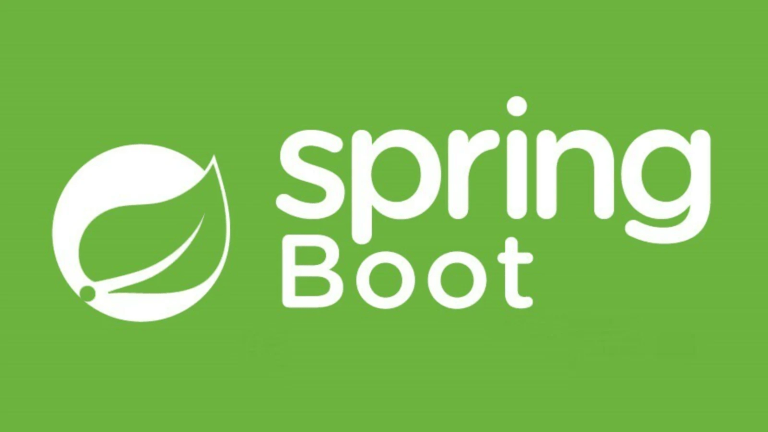Spring Boot gRPC Production Checklist (2025 Edition)
When building gRPC-based microservices in Spring Boot, ensuring your application is production-ready involves several critical steps. From setting up secure connections to implementing efficient monitoring tools, production readiness is more than just deploying your application—it’s about creating a robust, reliable, and scalable environment.
This comprehensive 2025 checklist will guide you through the essential tasks to ensure your gRPC applications in Spring Boot are fully optimized and secure for production. Whether you’re deploying for the first time or refining an existing infrastructure, this guide covers all the bases.
Table of Contents
- Using proto3 with a Strict Schema
- Securing with TLS/SSL
- Adding Timeouts to gRPC Clients
- Logging with MDC (traceId)
- Health Checks with Actuator and gRPC Interceptors
- Metrics with Micrometer and Prometheus
- Distributed Tracing with Zipkin or Jaeger
- Load Balancing with Envoy or Istio
- Versioning .proto Files for Compatibility
- Rollback and Blue/Green Deployment
- FAQs
- Summary
Using proto3 with a Strict Schema
Proto3 is the recommended version of Protocol Buffers, the serialization mechanism used in gRPC, and enforcing a strict schema ensures compatibility across services.
Best Practices:
- Mark Fields as Required (if always needed):
- Proto3 eliminates the explicit
requiredkeyword, so use validations in yourgRPCservices.
- Proto3 eliminates the explicit
syntax = "proto3";
message User {
string id = 1;
string name = 2;
}- Reserve Field Numbers:
When removing fields, mark them as reserved to avoid future conflicts.
reserved 3, 4;
- Keep Schemas Backward Compatible:
Always allow older clients to communicate with new services.
Securing with TLS/SSL
Security is non-negotiable in production systems. gRPC secures communication primarily through TLS (Transport Layer Security).
Steps:
- Generate Certificates:
Use tools like OpenSSL to generate server and client certificates.
openssl req -x509 -nodes -days 365 -newkey rsa:2048 -keyout server.key -out server.crt
- Enable TLS in Spring Boot:
Configure your application.yml:
grpc:
server:
security:
certificate-chain-file: "server.crt"
private-key-file: "server.key"- Use mTLS for Mutual Authentication (if needed):
This is ideal for secure inter-service communication.
Adding Timeouts to gRPC Clients
Timeouts prevent hanging calls and ensure requests fail gracefully if they exceed acceptable durations.
Configuration:
Set the timeout at the client level:
ManagedChannel channel = ManagedChannelBuilder.forAddress("localhost", 9090)
.usePlaintext()
.build();
GreeterGrpc.GreeterBlockingStub stub = GreeterGrpc.newBlockingStub(channel)
.withDeadlineAfter(500, TimeUnit.MILLISECONDS);Integrate timeouts consistently across all your gRPC calls to improve resilience.
Logging with MDC (traceId)
MDC (Mapped Diagnostic Context) enhances observability in distributed systems by associating logs with unique traceId or spanId.
Implementation:
- Set Up Logging:
Add slf4j MDC to propagate traceId:
MDC.put("traceId", "unique-trace-id");
log.info("Processing request with traceId");
MDC.clear();- Integrate with Distributed Tracing:
Combine MDC with tools like Zipkin for full traceability.
Explore MDC and SLF4J configuration
Health Checks with Actuator and gRPC Interceptors
Monitoring the health of your services is critical for uptime and reliability.
Add Actuator to Your Application:
<dependency>
<groupId>org.springframework.boot</groupId>
<artifactId>spring-boot-starter-actuator</artifactId>
</dependency>Expose a /health endpoint:
management:
endpoints:
web:
exposure:
include: healthImplement gRPC Health Interceptors:
@GrpcService
public class HealthService extends HealthGrpc.HealthImplBase {
@Override
public void check(HealthCheckRequest request, StreamObserver<HealthCheckResponse> responseObserver) {
responseObserver.onNext(HealthCheckResponse.newBuilder()
.setStatus(HealthCheckResponse.ServingStatus.SERVING)
.build());
responseObserver.onCompleted();
}
}Learn About Spring Boot Actuator
Metrics with Micrometer and Prometheus
Real-time metrics collection can significantly strengthen diagnostic and performance monitoring.
- Micrometer acts as a metrics facade.
- Prometheus stores and visualizes metrics.
Configuration:
- Add Micrometer dependencies:
<dependency>
<groupId>io.micrometer</groupId>
<artifactId>micrometer-registry-prometheus</artifactId>
</dependency>- Expose Prometheus metrics:
management.metrics.export.prometheus.enabled=true
Use these metrics to set alerts on anomalies.
Distributed Tracing with Zipkin or Jaeger
Distributed tracing helps you visualize end-to-end requests across microservices.
Integration Steps:
- Add dependencies:
<dependency>
<groupId>io.zipkin.reporter2</groupId>
<artifactId>zipkin-reporter</artifactId>
</dependency>- Configure:
- Publish spans to a central trace collector like Zipkin or Jaeger.
Load Balancing with Envoy or Istio
For scalable deployments, enable load balancing using tools like Envoy or Istio. These proxies distribute requests seamlessly across service instances.
- Envoy Configuration (Sample):
static_resources:
clusters:
- name: grpc_backend
connect_timeout: 0.25s
type: logical_dns
lb_policy: round_robin- Istio for Advanced Features:
Istio integrates seamlessly for traffic management and observability.
Explore Istio Traffic Management
Versioning .proto Files for Compatibility
Schema evolution is inevitable; managing .proto file versions ensures backward compatibility.
Best Practices:
- Always add new fields instead of modifying existing ones.
- Reserve field numbers to avoid re-use.
- Assign versioning metadata in service descriptors.
Google Protobuf Best Practices
Rollback and Blue/Green Deployment
Ensure safe deployments by applying blue/green strategies and rollback mechanisms.
- Blue/Green Deployment:
- Maintain two environments (e.g., staging and production).
- Test new deployments on the blue environment before switching traffic.
- Rollback:
Automate rollbacks for failed deployments to maintain uptime.
Kubernetes Rolling Update Guide
FAQs
Why is TLS/SSL important in gRPC?
TLS ensures secure communication by encrypting data transferred between clients and servers, protecting against eavesdropping and tampering.
What tools can test gRPC production readiness?
Use tools like grpcurl for testing and Prometheus for real-time monitoring.
Can REST and gRPC coexist in the same application?
Absolutely! Many hybrid systems use REST for external APIs and gRPC for internal microservices.
How do you achieve rollback in production?
Use Kubernetes or deployment strategies like blue/green to enable easy rollbacks.
How can I debug gRPC in production?
Use distributed tracing tools like Jaeger and integrate gRPC logging with MDC for insights.
Summary
Ensuring your Spring Boot gRPC application is production-ready involves securing communication with TLS, proactively monitoring metrics, implementing robust health checks, and using advanced deployment strategies such as blue/green. By following this checklist, you can confidently deploy and scale your services while ensuring performance and reliability. Explore further with the external resources linked here and establish a resilient production environment for 2025 and beyond.



